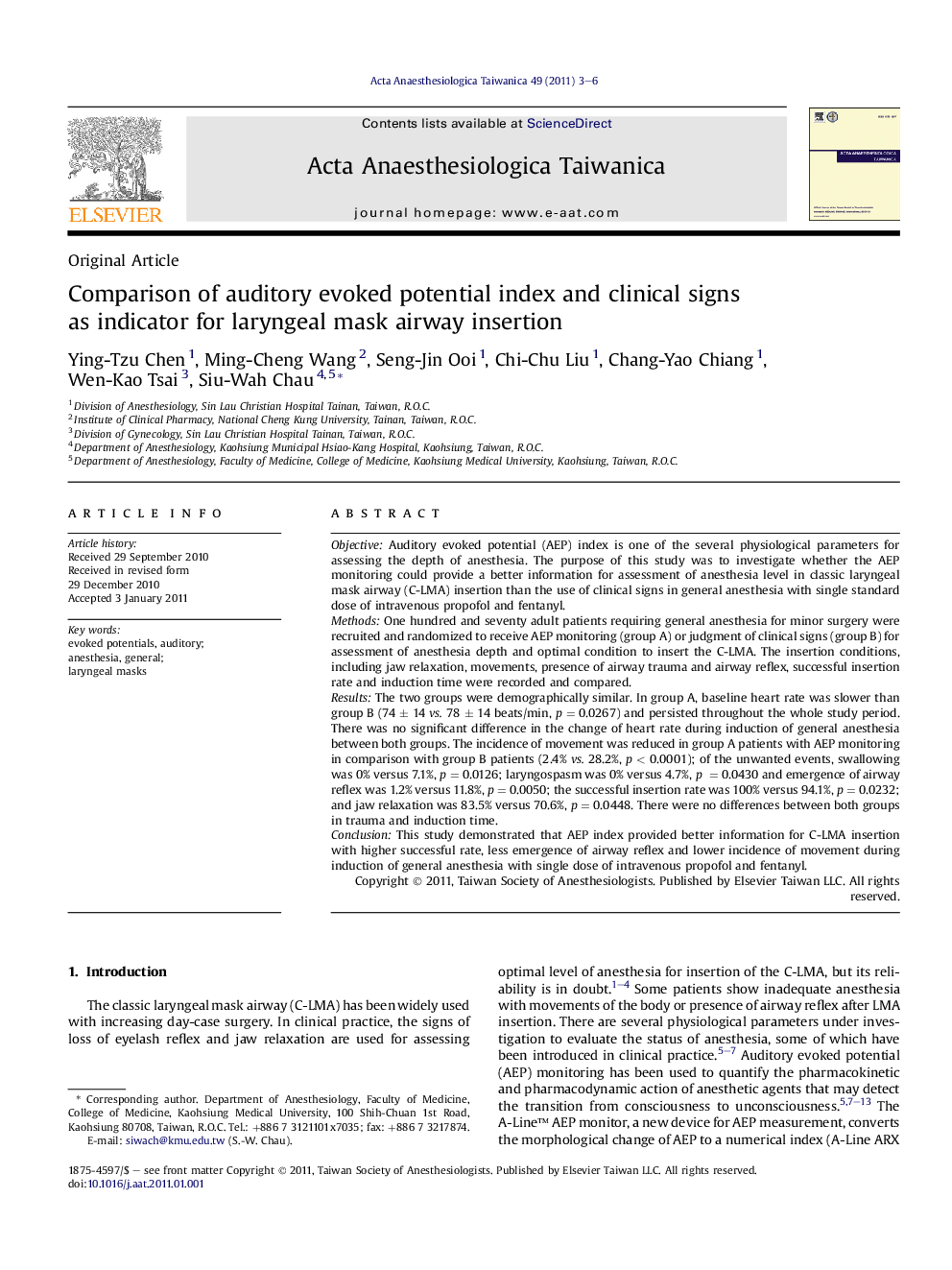| Article ID | Journal | Published Year | Pages | File Type |
|---|---|---|---|---|
| 2741612 | Acta Anaesthesiologica Taiwanica | 2011 | 4 Pages |
ObjectiveAuditory evoked potential (AEP) index is one of the several physiological parameters for assessing the depth of anesthesia. The purpose of this study was to investigate whether the AEP monitoring could provide a better information for assessment of anesthesia level in classic laryngeal mask airway (C-LMA) insertion than the use of clinical signs in general anesthesia with single standard dose of intravenous propofol and fentanyl.MethodsOne hundred and seventy adult patients requiring general anesthesia for minor surgery were recruited and randomized to receive AEP monitoring (group A) or judgment of clinical signs (group B) for assessment of anesthesia depth and optimal condition to insert the C-LMA. The insertion conditions, including jaw relaxation, movements, presence of airway trauma and airway reflex, successful insertion rate and induction time were recorded and compared.ResultsThe two groups were demographically similar. In group A, baseline heart rate was slower than group B (74 ± 14 vs. 78 ± 14 beats/min, p = 0.0267) and persisted throughout the whole study period. There was no significant difference in the change of heart rate during induction of general anesthesia between both groups. The incidence of movement was reduced in group A patients with AEP monitoring in comparison with group B patients (2.4% vs. 28.2%, p < 0.0001); of the unwanted events, swallowing was 0% versus 7.1%, p = 0.0126; laryngospasm was 0% versus 4.7%, p = 0.0430 and emergence of airway reflex was 1.2% versus 11.8%, p = 0.0050; the successful insertion rate was 100% versus 94.1%, p = 0.0232; and jaw relaxation was 83.5% versus 70.6%, p = 0.0448. There were no differences between both groups in trauma and induction time.ConclusionThis study demonstrated that AEP index provided better information for C-LMA insertion with higher successful rate, less emergence of airway reflex and lower incidence of movement during induction of general anesthesia with single dose of intravenous propofol and fentanyl.
